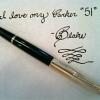What Does Your Handwriting Look Like
-
Forum Statistics
355.2k
Total Topics4.6m
Total Posts -
Member Statistics
128,278
Total Members18,857
Most OnlineNewest Member
Stephen M
Joined -
Images
-
Albums
-
USG 9
- By USG,
- 0
- 0
- 3
-
Mechanical's Pens & Ink
- By Mechanical,
- 0
- 0
- 26
-
Andrew Lensky Arts
- By Andrew_L,
- 1
- 21
- 45
-
Chinese pens
- By A Smug Dill,
- 22
- 94
-
My Stash
- By A Smug Dill,
- 18
-


















.thumb.jpg.f07fa8de82f3c2bce9737ae64fbca314.jpg)




.thumb.jpg.331e554113c33fb39d5bf3233878978a.jpg)





Recommended Posts
Create an account or sign in to comment
You need to be a member in order to leave a comment
Create an account
Sign up for a new account in our community. It's easy!
Register a new accountSign in
Already have an account? Sign in here.
Sign In Now